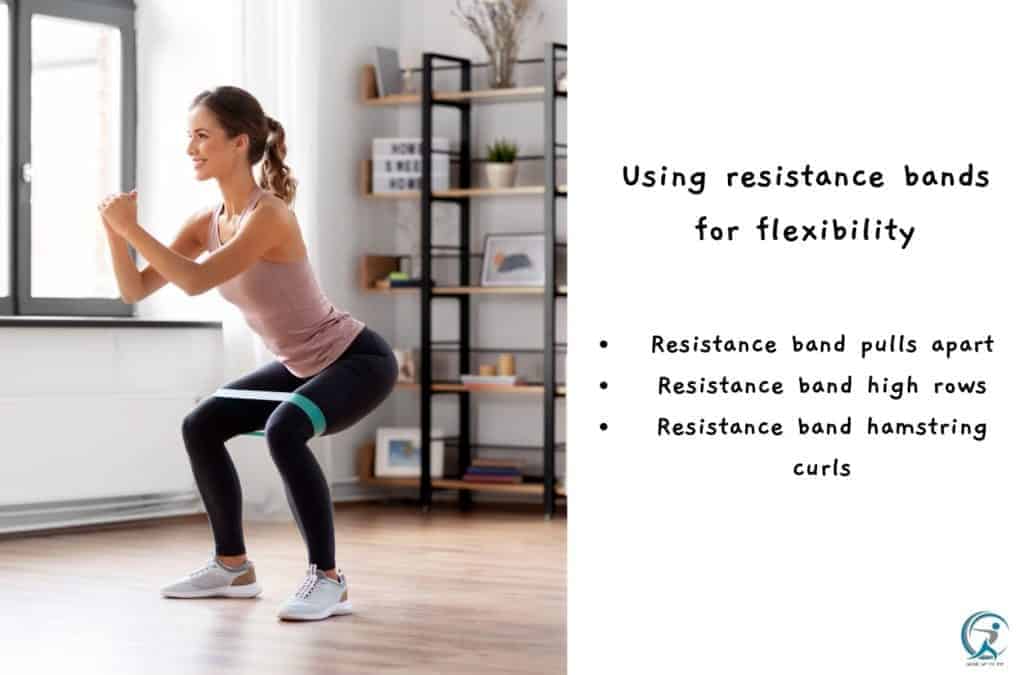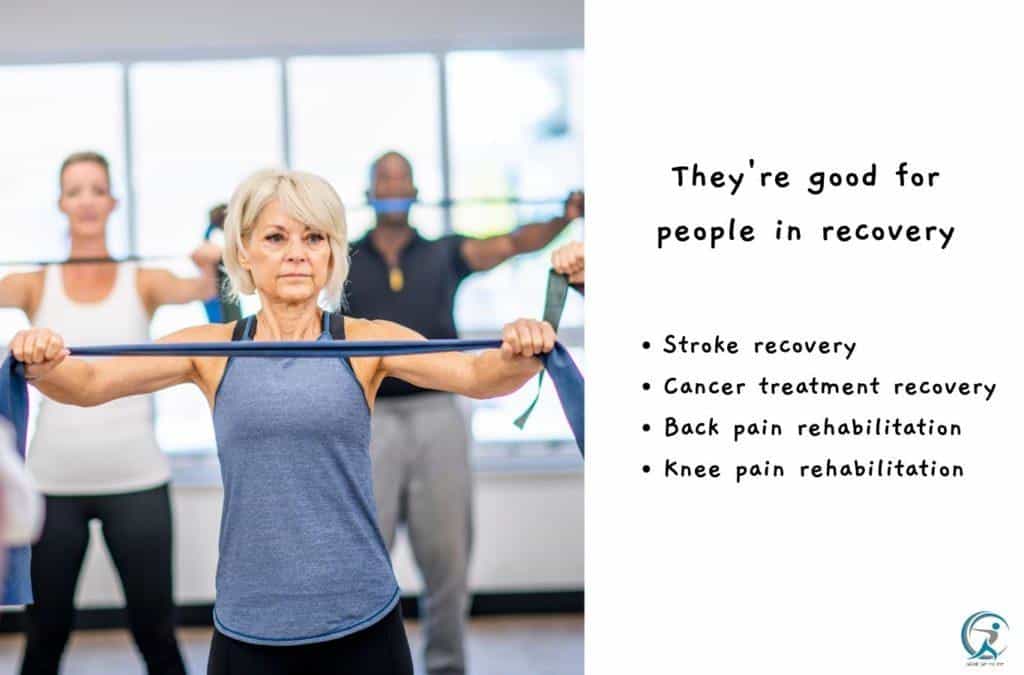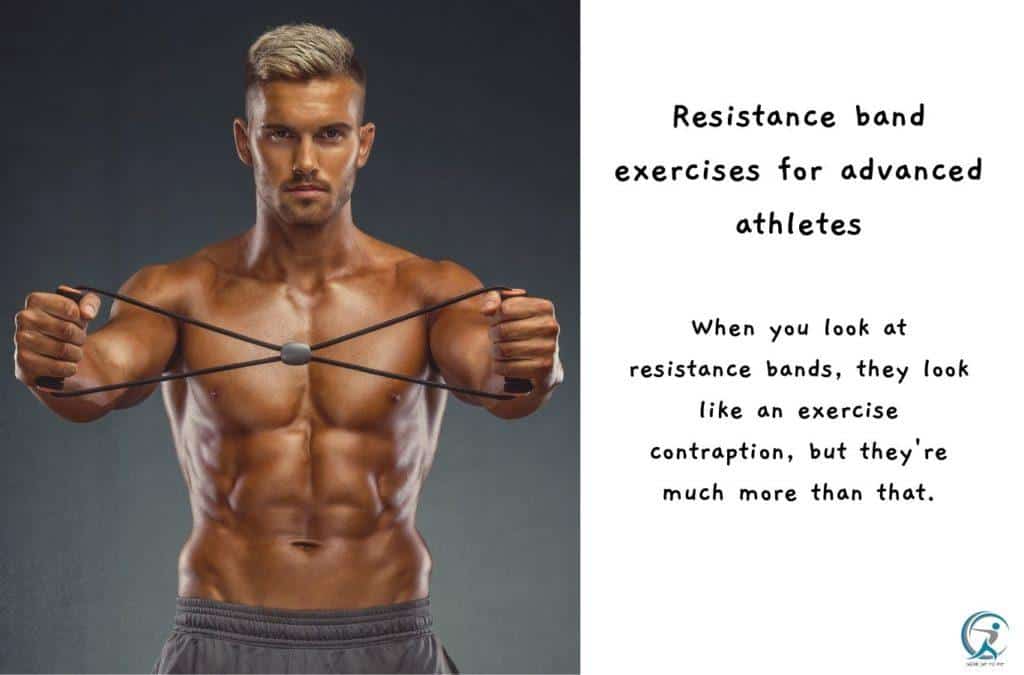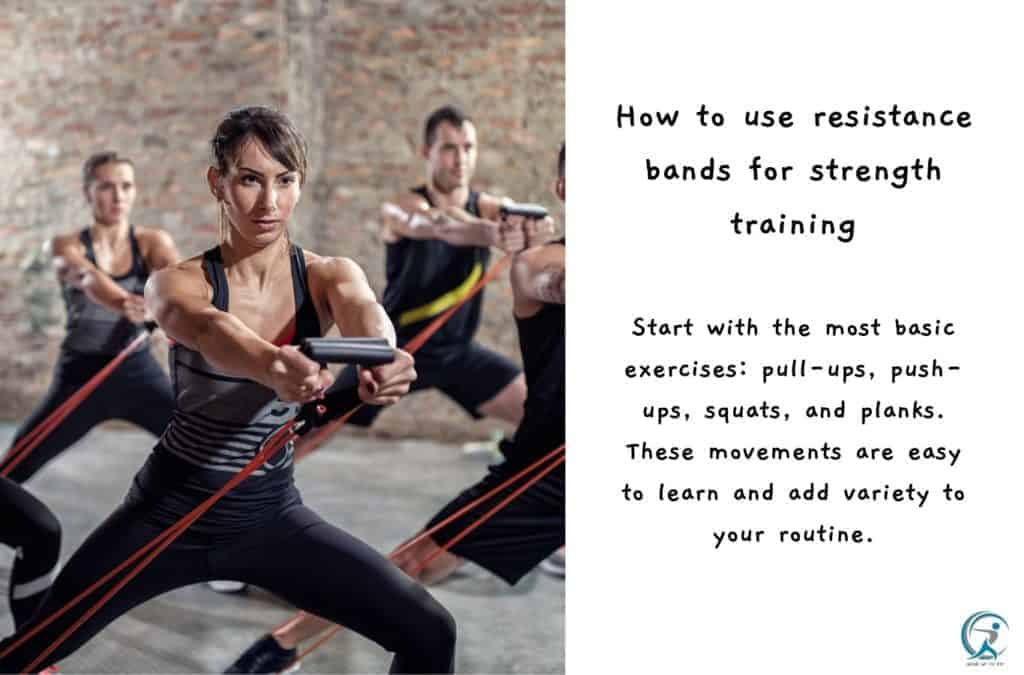Okay, let’s be honest, the world of fitness can feel… overwhelming. But what if I told you there’s a super simple, super effective, and super fun way to get in shape? Enter: resistance bands. These little elastic bands are about to become your new best friend. Seriously! They’re like having a portable gym you can use anywhere.
Forget the bulky equipment and the high monthly fees. We’re talking real results without the fuss. Studies show that you can get muscle strength gains similar to traditional weights using resistance bands (Bergquist et al., 2018), so let’s dive into all things resistance!
Key Takeaways:
- Effective Strength Training: Resistance bands provide muscle strength gains comparable to traditional weights, making them suitable for building muscle mass.
- Versatile and Convenient: They come in various sizes and resistance levels, allowing use for all fitness levels and are portable, enabling workouts anywhere.
- Enhance Flexibility and Mobility: Resistance bands improve flexibility and range of motion, aiding in better mobility for joints and muscles.
- Rehabilitation Tool: Ideal for injury recovery and prevention, they offer gentle resistance that strengthens muscles without stressing joints.
- Core Engagement: Workouts with bands effectively engage core muscles, enhancing stability and functional fitness.
- Mental Health Benefits: Regular exercise with resistance bands can reduce stress and boost mood, contributing to overall mental well-being.
Let’s Get Real: What Exactly Are These Elastic Bands Anyway?

So, what are these magical bands? Simply put, they’re strips or loops made of stretchy stuff like latex or fabric. They create constant tension as you stretch them, which forces your muscles to work harder.
They come in all sorts of sizes and resistance levels, which makes them perfect for all fitness levels. Elastic bands are the perfect piece of equipment to get the job done.
The Magic Behind the Stretch: How Resistance Bands Really Work
Okay, here’s the science-y part (but I promise to keep it simple). Unlike weight machines that use gravity to create resistance, elastic resistance bands use tension. When you pull on the band, your muscles have to work against the variable resistance, leading to muscle activation and stimulation throughout the entire movement, from the starting position to the end.
This means they’re not only making your muscles stronger, but they’re also engaging them in a very unique way. Research backs this up, showing that training with resistance bands can increase muscle power and endurance (Lopes et al., 2019).
Why Everyone’s Obsessed: The Epic Benefits of Resistance Bands
Okay, so they work, but what can they actually do for you? Prepare to be amazed!
Strength Training Made Simple: Building Muscle Strength & Mass

Think resistance bands are just for toning? Think again! They can seriously boost your muscular strength and muscle mass just as effectively as heavy weights (Lopes et al., 2019).
The constant tension provided by elastic resistance ensures that your muscles are engaged from starting position to the end of each movement. If you’re looking for more ways to build strength, check out this guide on strength training for weight loss.
Flexibility & Range of Motion: Move Like You’re Meant To

Want to improve your flexibility? Resistance bands are your secret weapon for that too! They help you stretch deeper and improve your range of motion. Better mobility in your hips, shoulders, and legs is all thanks to resistance band exercises that help unlock your body’s natural ability to move. For more tips on improving flexibility, explore this flexibility and mobility guide.
Rehab & Injury Proofing: Gentle Healing, Powerful Results

Physical therapy loves these bands for a reason! Therapy bands are amazing for rehabilitation and injury prevention. The gentle, controlled resistance helps to strengthen muscles and joints without putting too much stress on them.
They are often used to treat a wide range of injuries, such as back pain and joint pain. Physical therapists recommend these for injury recovery. A study in Physical Therapy in Sport shows that using elastic resistance leads to better results in people with musculoskeletal disorders (Micheletti et al., 2020).
Unleash Your Inner Power: Core Strength and Stability
Forget those endless crunches, resistance bands are a core muscles game-changer! Resistance band training engages your core muscles while working out other muscle groups. The result? A stronger, more stable core and a whole new level of functional fitness. For more core-strengthening exercises, check out these core strength exercises.
Balance & Coordination: Become a Master of Movement
Working out with resistance bands also improves your balance and coordination. They challenge your body in unique ways, which builds more stable muscles. This leads to better balance and a reduced risk of injury.
Body Transformation: Weight Loss and a Better You
While resistance bands don’t magically melt fat, they’re an awesome partner in your weight loss journey. They help build muscle mass, which boosts your metabolism and burns more calories (Non-exercise activity thermogenesis, Levine 2004). Combine them with a healthy diet, and you’ve got a winning strategy for body transformation! The benefit of resistance bands is that they make you more fit! For more weight loss tips, check out this weight loss guide.
Mental Health Boost: Feel Amazing, Inside and Out
Let’s not forget the mind-body connection! Working out, especially with resistance bands, helps reduce stress, boost your mood, and sharpen brain function. Harvard Health supports this and states that even small amounts of movement can have great benefits for mental health.
Total Convenience: Your Gym, Anywhere
The convenience of resistance bands is unmatched! They’re lightweight, compact, and travel-friendly. No more excuses about missing a body workout. You can exercise anytime and anywhere, no expensive equipment needed!
Band Up: Exploring the Types of Resistance Bands
Ready to get started? First, let’s take a look at the different types of resistance bands:
The All-Rounder: Loop Bands
These closed loop bands are versatile for all types of workouts, especially targeting your lower body and legs.
The Classic: Flat Bands
Also known as flat resistance bands, these are the traditional bands that are often used to treat injury. They’re good for a wide range of exercises.
The Comfy Option: Fabric Bands
Wider and softer, fabric bands provide extra comfort and grip. They’re great for preventing that “snap” feeling that some find with rubber bands. The benefit of resistance bands like these is their flexibility.
The Targeters: Mini Bands
These small loops are perfect for targeting specific areas like your hips and shoulders. They’re great for activating and strengthening specific muscles.
The Powerhouses: Power Resistance Bands
These thicker, heavier bands are made for experienced lifters or those looking for a greater challenge with heavy resistance.
Your Guide to Resistance Band Training: Time to Get Moving!
Okay, enough talk. Let’s get to the fun part – the exercises!
Beginner-Friendly Resistance Band Exercises: Start Strong
Start with lighter bands and focus on good form. Some beginner exercises are:
- Band Pull-Aparts: Great for posture and upper body.
- Banded Squats: Amplify your regular squats.
- Standing Rows: Great for your back and biceps.
- Bicep Curls: Strengthen your biceps curls by adding resistance.
Take It Up a Notch: Intermediate & Advanced Exercises

Ready to level up? Try these harder exercises:
- Lateral Raises: Strengthens your shoulders.
- Single-Leg Deadlifts: Challenges balance and hamstring strength.
- Compound Movements: Combines different exercises.
- Explosive Movements: Increase speed to enhance your strength.
Strength Training with Bands: Build the Body You Want

For strength gains, choose exercises that target all major muscles. Keep the band taut for the entire range, and increase resistance over time.
Cardio with Bands: Ignite Your Metabolism
Use resistance bands to amp up your cardio! Do high-rep, full-body workouts to increase calorie burn. This is a great alternative to a traditional cardio session.
Stretching with Bands: Increase Your Range of Motion
Use resistance bands to deepen your stretches. Hold them for 20-30 seconds to increase your range of motion. You can even use them to improve hip mobility!
Resistance Bands for Weight Loss: The Smart Approach
Resistance bands are an amazing part of any weight loss plan. They increase your muscle mass and calorie burn! Combine resistance band exercises with a healthy diet and you’re on the right path.
Rehab with Bands: Gentle and Effective Recovery
Therapy bands are the best! Start with a light resistance band and get help from a physical therapist to heal your body correctly, and reduce your risk of injury.
Safety First: Minimize the Risk of Injury

Always check bands for wear and tear before each workout. Keep a slight bend in your joints. Start slow, and engage your core throughout. Proper form can help to minimize the risk of injury.
Your Full-Body Blast: Maximize Your Time
Use compound movements that work more than one muscle at a time. This will help you get more done in a shorter period of time.
Finding Your Fit: How to Pick the Right Resistance Levels
Resistance bands come with different resistance levels, usually shown with colors or thickness.
Band Selection: Matching Your Fitness Level
- Beginners: Start with lighter bands.
- Intermediate: Move up to medium-resistance.
- Advanced: Use a heavy resistance power resistance band to really push your limits. As you progress, increase your level of resistance.
Making It a Habit: Fitness Routine Made Easy
Here are some tips to make resistance bands a regular part of your fitness routine:
- Warm up properly before each workout.
- Engage your core throughout.
- Move slowly and with control.
- Don’t rush your reps.
- Maintain proper form.
- Increase resistance as you get stronger.
- Combine resistance band exercises with other activities.
Resistance Bands vs. Traditional Weights: The Ultimate Showdown
Traditional weights and resistance bands both have pros and cons. Resistance bands win on convenience, cost, and joint-friendliness, while traditional weights may be better for experienced weight lifters wanting to lift heavy weights.
Pro Tips from a fitness expert
“As a fitness expert, I’ve seen the real power of resistance band training,” says Alex Papaioannou, founder of GearUpToFit.com. “They’re so versatile and can be used by anyone at any fitness level. It’s a fantastic way to improve muscular strength, joint mobility, and functional fitness.
You get all of that with the added advantage of resistance bands, in that they are portable, affordable, and easy to use.” When starting out, consider meeting with a master trainer or physical therapists to create the perfect fitness plan for you.
FAQs
Q: What are resistance bands good for?
A: They’re versatile for muscle strength, flexibility, rehab, and overall fitness.
Q: How do elastic bands work?
A: They provide constant tension as you stretch, engaging muscles through each repetition.
Q: Can resistance band training help with weight loss?
A: Absolutely! They build muscle mass and boost your metabolism, supporting weight management.
Q: Are resistance bands for everyone?
A: Yes! Different resistance levels ensure they are suitable for all.
Q: How should I start my workout routine with resistance bands?
A: Start slow with lighter bands. Ensure proper form and work your way up to more heavy resistance.
The Takeaway: Embrace the Power of the Band

Resistance bands are your secret to unlocking a healthier, stronger you. Whether you’re a fitness newbie or an experienced athlete, these bands offer a world of benefits that are all too often overlooked. It’s time to step into a new type of exercise routine and embrace the power of the band!
References:
Absolutely. In fact, a 2019 study shows that training using resistance bands provides similar strength gains to using conventional gym equipment.
https://www.ncbi.nlm.nih.gov/pubmed/7851367
Veldema J, Jansen P.Resistance training in stroke rehabilitation: Systematic review and meta-analysis.Clin Rehabil. 2020;34(9):1173-1197. doi:10.1177/0269215520932964
Patil P, Rao S.Effects of Thera-Band® elastic resistance-assisted gait training in stroke patients: a pilot study.Eur J Phys Rehabil Med. 2011;47(3):427-33.
The force you need to exert to stretch a resistance band works your muscles, similar to heavier dumbbells or exercise machines, according to the Cleveland Clinic.
National Safety Council.Sports and recreational injuries.
In astudyof 18 participants, researchers assessed microvascular function, heart/lung fitness, strength, flexibility, and quality of life. After an 8-week home exercise program participantsimproved their blood vessels dilation, leg strength and flexibility, general health, pain, and fatigue.
Pick the Best Resistance Bands










As a veteran fitness technology innovator and the founder of GearUpToFit.com, Alex Papaioannou stands at the intersection of health science and artificial intelligence. With over a decade of specialized experience in digital wellness solutions, he’s transforming how people approach their fitness journey through data-driven methodologies.